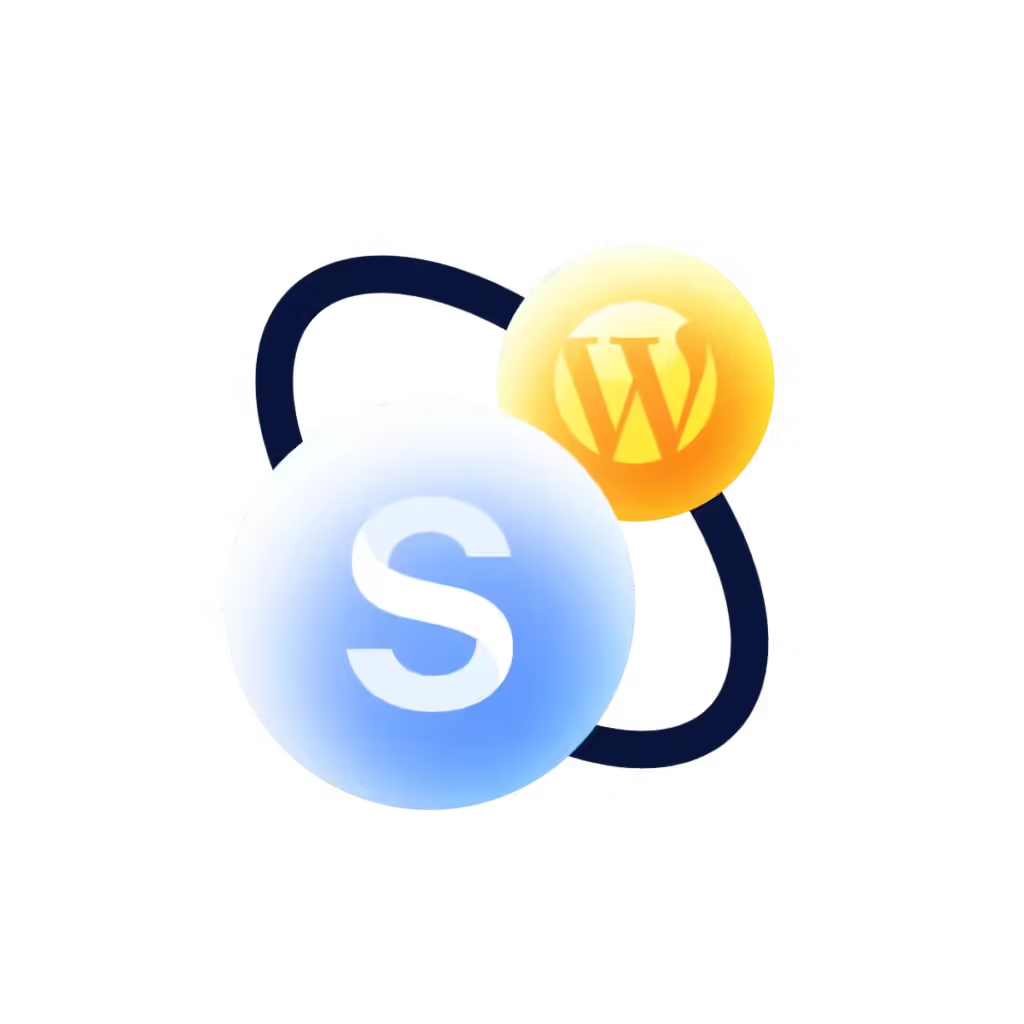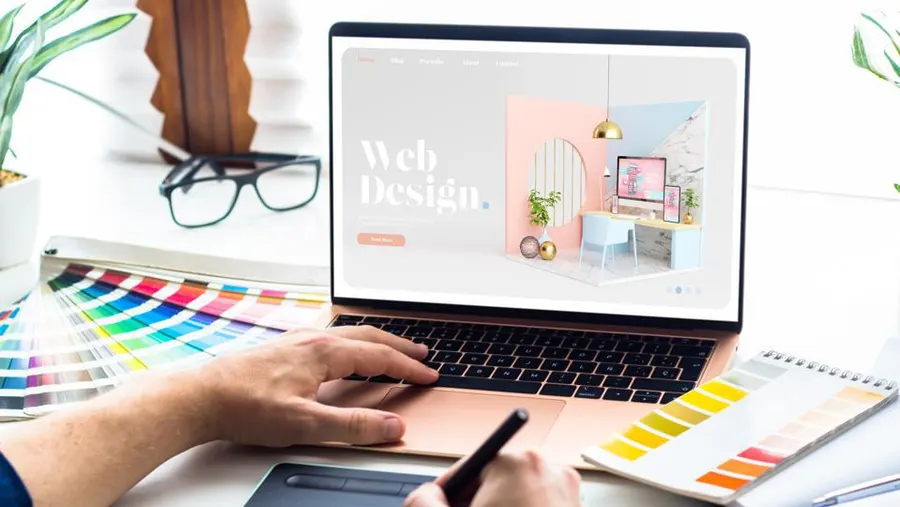To design a WordPress website, start by selecting a suitable theme and plugins that align with your brand and goals. Then, customize the website’s layout, colors, and fonts to create a cohesive and visually appealing design.
Designing a WordPress website involves selecting a theme and plugins that align with your brand and goals. Customizing the layout, colors, and fonts will create a visually appealing and cohesive design. When visitors land on your site, they should find it easy to navigate and engage with your content.
In this guide, we will explore the essential steps and best practices to design a WordPress website that not only looks great but also functions effectively. Whether you’re creating a personal blog, portfolio, or business website, these tips will help you create a professional and user-friendly online presence that resonates with your audience.
Crafting Your Vision
Before diving into the nitty-gritty of designing your WordPress website, it’s crucial to establish a clear vision for your project. This involves identifying the purpose and goals of your website, as well as creating inspiration and mood boards to guide the design process. By taking the time to craft your vision, you can ensure that your website reflects your brand identity and resonates with your target audience.
Identifying Purpose And Goals
When embarking on the design journey, it’s essential to have a solid understanding of the purpose and goals of your website. Whether you aim to showcase your portfolio, sell products, or share valuable content, defining the primary objectives will shape the design direction. Consider the specific actions you want visitors to take on your site, such as making a purchase, subscribing to a newsletter, or contacting you for services. This clarity will inform the layout, content, and functionality of your WordPress website.
Inspiration And Mood Boards
Creating inspiration and mood boards can serve as a visual roadmap for your website design. Gather images, color palettes, typography samples, and design elements that resonate with your brand and the emotions you want to evoke in your audience. By curating these visual references, you can communicate your vision to designers, developers, or even tackle the design yourself. These boards will help maintain a cohesive aesthetic throughout the design process, ensuring that your website aligns with your brand’s identity and resonates with your target audience.

Credit: www.designrush.com
Choosing The Right WordPress Theme
Choosing the Right WordPress Theme is crucial for creating a visually appealing and functional website that aligns with your brand identity.
Theme Selection Criteria
- Consider the overall design and layout of the theme.
- Evaluate the responsiveness and mobile-friendliness of the theme.
- Check the compatibility of the theme with popular plugins.
Free Vs. Premium Themes
- Free Themes: Economical choice, but may lack advanced features.
- Premium Themes: Offers more customization options and support.
Essential Plugins For Enhancement
When it comes to designing a WordPress website, incorporating essential plugins can greatly enhance its functionality and performance. These plugins play a crucial role in optimizing various aspects of your website, including SEO, security, performance, and backup solutions. In this section, we will delve into the essential plugins that can take your WordPress website to the next level, focusing on SEO and performance, as well as security and backup solutions.
Seo And Performance
Optimizing your WordPress website for search engines is paramount for increasing visibility and driving organic traffic. To achieve this, Yoast SEO stands out as an essential plugin that offers comprehensive SEO tools, including keyword optimization, meta tags, and XML sitemaps. Additionally, W3 Total Cache is a must-have for improving website performance through caching and minimizing load times, ultimately enhancing the user experience.
Security And Backup Solutions
Enhancing the security of your WordPress website is crucial in safeguarding it against potential threats. Wordfence Security is a top-notch security plugin that provides firewall protection, malware scanning, and login security features. Moreover, UpdraftPlus offers reliable backup solutions, allowing you to schedule automatic backups and store your website data securely.
Customizing Your Theme
Discover the power of customizing your theme to design a unique WordPress website. Tailor your website’s appearance and functionality to captivate your audience and enhance user experience. Experiment with different elements to create a visually appealing and user-friendly online presence.
Customizing your WordPress theme is a crucial step in designing your website. It helps you add your own touch and personality to your website. WordPress offers a variety of customization options, such as using the Customizer and Child Themes for Advanced Tweaks. Let’s dive into each of these options.
Using The Customizer
The Customizer is a built-in WordPress feature that allows you to customize your theme in real-time. It is easy to use and does not require any coding knowledge. Here are some of the things you can customize using the Customizer:
- Site Identity: You can add your site title, tagline, and logo.
- Colors: You can change the colors of your theme, including background, header, and footer colors.
- Fonts: You can choose from a variety of fonts to use on your website.
- Menus: You can create and customize your website’s navigation menus.
- Widgets: You can add, remove, and customize widgets on your website.
Child Themes For Advanced Tweaks
If you want to make more advanced changes to your WordPress theme, you can create a child theme. A child theme is a theme that inherits the functionality of its parent theme but allows you to make changes without affecting the parent theme. Here are some of the things you can do with a child theme:
- Customize templates: You can create custom templates for different pages on your website.
- Add new functionality: You can add new features to your website by adding code to your child theme’s functions.php file.
- Modify styles: You can modify the CSS styles of your theme to match your design preferences.
In conclusion, customizing your WordPress theme is an important part of designing your website. Whether you use the Customizer or create a child theme, these options allow you to add your own unique touch to your website.
Here’s a table comparing some of the most popular WordPress page builders:
| Page Builder | Description | Key Features | Pricing |
|---|---|---|---|
| Elementor | A powerful drag-and-drop page builder with a wide range of design options and customization features. | Real-time editing, extensive widget library, responsive design, theme builder. | Free version available, Pro plans starting from $49/year. |
| Divi | A versatile page builder with a visual editor and advanced design capabilities. | Visual builder, pre-designed layouts, global elements, split testing. | Yearly subscription starting from $89/year. |
| Beaver Builder | A flexible page builder with a user-friendly interface and robust customization options. | Front-end editing, reusable templates, WooCommerce support, multisite capabilities. | Starts from $99/year for Standard plan. |
| Visual Composer | A popular page builder with a drag-and-drop interface and extensive design elements. | Intuitive editor, responsive design, role manager, built-in templates. | Pricing starts from $49/year. |
| Thrive Architect | A conversion-focused page builder with a focus on lead generation and optimization. | Drag-and-drop editor, landing page templates, conversion-focused elements. | Single license priced at $67. |
These page builders offer various features and pricing options to cater to different user needs and preferences. It’s essential to explore each option and choose the one that best suits your requirements and budget.
Creating Content That Captivates
When designing a WordPress website, creating content that captivates your audience is crucial. Your content should be engaging, informative, and visually appealing. In this section, we’ll discuss how to develop a content strategy and incorporate multimedia elements to ensure your content stands out.
Developing A Content Strategy
Before you start creating content for your WordPress website, it’s essential to develop a content strategy. This strategy should outline your goals, target audience, and the type of content you’ll create. It’s important to research your target audience and understand their interests, pain points, and what they’re looking for in a website. This information will help you create content that resonates with your audience and keeps them coming back for more.
When developing your content strategy, consider the following:
| Factors to Consider | Questions to Ask Yourself |
|---|---|
| Goals | What do you want your content to achieve? |
| Target Audience | Who are you creating content for? |
| Content Type | What type of content will you create? |
| Content Frequency | How often will you publish new content? |
| Content Promotion | How will you promote your content? |
Multimedia Elements
Incorporating multimedia elements such as images, videos, and infographics can make your content more engaging and shareable. Multimedia elements help break up large blocks of text, making your content easier to read and understand. They also help illustrate your points and provide visual interest to your website.
When using multimedia elements, keep the following in mind:
- Choose high-quality images and videos that are relevant to your content.
- Optimize your images and videos for web use to ensure they load quickly.
- Add alt text to your images for accessibility and SEO purposes.
- Use infographics to present data in a visually appealing way.
- Ensure your multimedia elements are responsive and can be viewed on all devices.
By developing a content strategy and incorporating multimedia elements, you can create content that captivates your audience and helps your WordPress website stand out.
Responsive Design Techniques
When designing a WordPress website, it’s crucial to incorporate responsive design techniques to ensure that your website looks and functions seamlessly across various devices. Responsive design is essential for providing an optimal user experience and improving the overall performance of your website. Let’s delve into the key responsive design techniques to consider for your WordPress site.
Mobile Optimization
Mobile optimization is a fundamental aspect of responsive web design. With the increasing number of users accessing websites on mobile devices, it’s imperative to prioritize the mobile viewing experience. Optimize your website for mobile by using a responsive theme that adjusts seamlessly to different screen sizes. Ensure that the content is easily readable and navigable on smaller screens, and that all interactive elements are accessible on mobile devices.
Cross-device Testing
Conducting cross-device testing is essential to ensure that your website functions flawlessly across a wide range of devices, including smartphones, tablets, laptops, and desktops. Test your website’s responsiveness on various devices to identify and resolve any layout or functionality issues. Utilize tools and emulators to simulate different devices and screen sizes, and make necessary adjustments to enhance the overall user experience.
Mastering WordPress Blocks
Leveraging Gutenberg
With Gutenberg, creating dynamic layouts is intuitive and efficient.
Custom Block Types
Develop unique block types to tailor your content to perfection.

Credit: wordpress.org
Launch And Post-launch Strategies
When it comes to designing a WordPress website, it’s crucial to have a solid plan in place for both the launch and post-launch strategies. Launching a website is just the beginning, and having a well-thought-out post-launch strategy is essential for the long-term success of your website. In this section, we will discuss the key elements of the pre-launch checklist, as well as growth and maintenance plans to ensure that your WordPress website continues to thrive even after it has been launched.
Pre-launch Checklist
Before launching your WordPress website, there are several important tasks that need to be completed to ensure a successful launch. Here’s a checklist of essential items to consider:
- Content Review: Ensure all website content is error-free and optimized for SEO.
- Mobile Responsiveness: Test the website on various devices to ensure it is mobile-friendly.
- Performance Optimization: Optimize images, minify CSS and JavaScript, and utilize caching to improve website speed.
- SEO Setup: Configure SEO plugins, set up meta tags, and create an XML sitemap for search engine visibility.
- Security Measures: Install security plugins, enable SSL, and implement regular backups to protect the website from potential threats.
Growth And Maintenance Plans
Once your WordPress website is live, it’s important to have a plan for its ongoing growth and maintenance. Here are some strategies to consider:
- Content Updates: Regularly update and add new content to keep your website fresh and engaging for visitors.
- Performance Monitoring: Continuously monitor website performance and user experience to identify areas for improvement.
- SEO Audits: Conduct regular SEO audits to ensure that your website remains optimized for search engines.
- Security Checks: Perform regular security checks and updates to protect your website from vulnerabilities.
- Backup and Recovery: Implement a reliable backup and recovery system to safeguard your website data.

Credit: www.linkedin.com
Frequently Asked Questions
How Do I Design My Own WordPress Website?
To design your own WordPress website, choose a theme, customize it, add plugins, create pages, and optimize for SEO.
How Do I Make A Good WordPress Website?
To create a good WordPress website, start by choosing a reliable hosting provider and installing WordPress. Select a responsive theme, customize it, and add essential plugins for security, SEO, and performance. Create high-quality content, optimize for SEO, and regularly update your site to engage visitors and improve rankings.
What Are The 7 Steps To Create A WordPress Site?
To create a WordPress site, follow these 7 steps: 1. Choose a domain and hosting provider. 2. Install WordPress on your hosting account. 3. Select a theme for your site. 4. Customize the site’s appearance and layout. 5. Add essential plugins for functionality.
6. Create and publish your content. 7. Optimize for SEO and launch your site.
How Much Does It Cost To Design A Website On WordPress?
The cost to design a website on WordPress can range from $500 to $5000, depending on complexity.
Conclusion
Crafting a WordPress website requires attention to detail and user experience. By following these steps, you can create a visually appealing and functional site that resonates with your audience. Remember to optimize for SEO, engage with your visitors, and stay up-to-date with the latest trends.
Happy designing!



